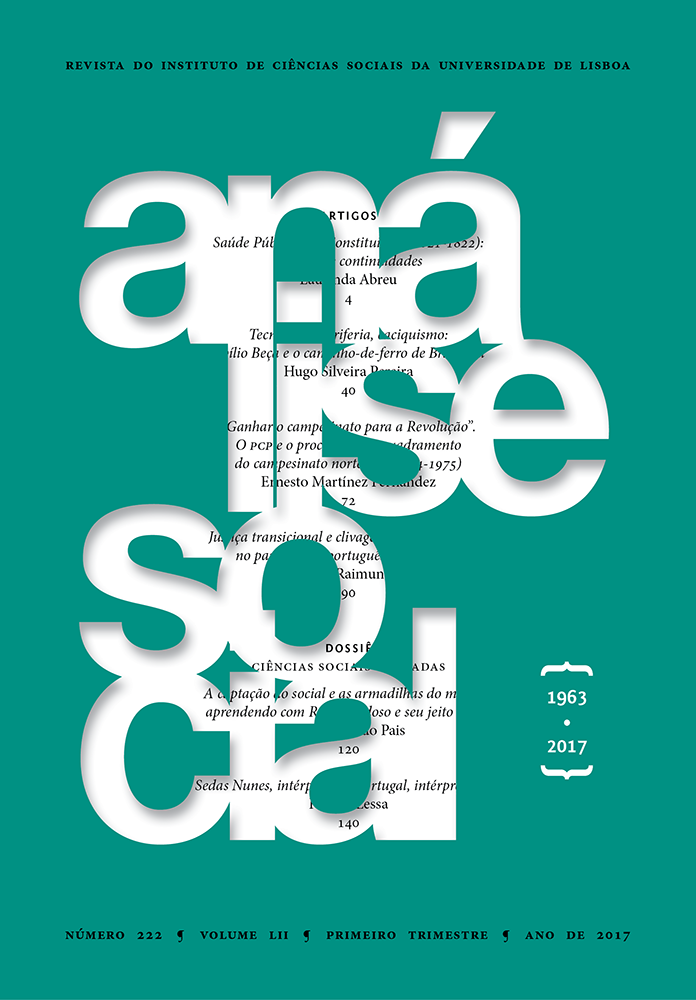Technology, periphery, local leadership: Abílio Beça and the Bragança railway
DOI:
https://doi.org/10.31447/AS00032573.2017222.02Keywords:
Tua line, railways, territorial politics, technopoliticsAbstract
By the end of the nineteenth century the northernmost regions of the district of Bragança were still not connected to the national railway network. The attempts presented to the parliament to solve this situation were disregarded due to the partial default of Portugal in 1892. Despite the crisis, Abílio Beça, a “cacique” (local leader) from Bragança, struggled to convince the government to build the extension of the Tua line from Mirandela to Bragança. This paper explains how Abílio Beça became a local influencer and how he rose in the hierarchy of the Regenerator Party to convince the government to open a tender for the adjudication of the railway. We analyze this process under the center-periphery model in a triple perspective: economic, political, and technological.



